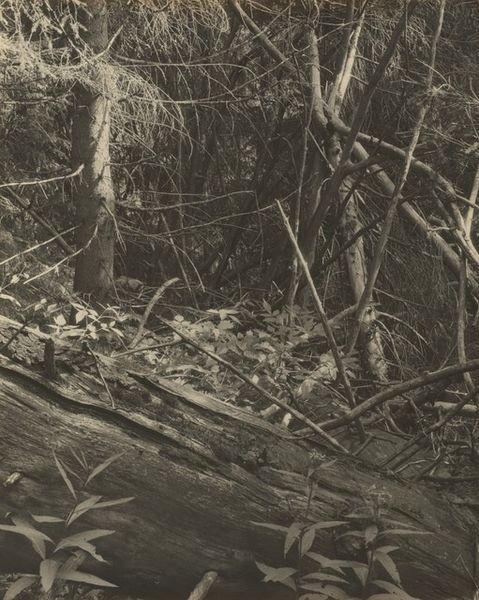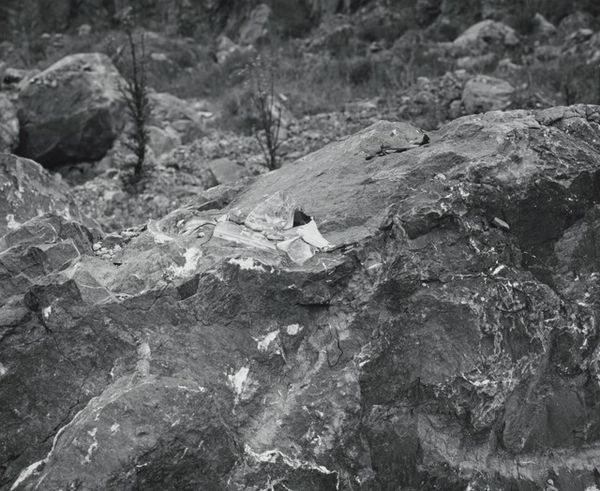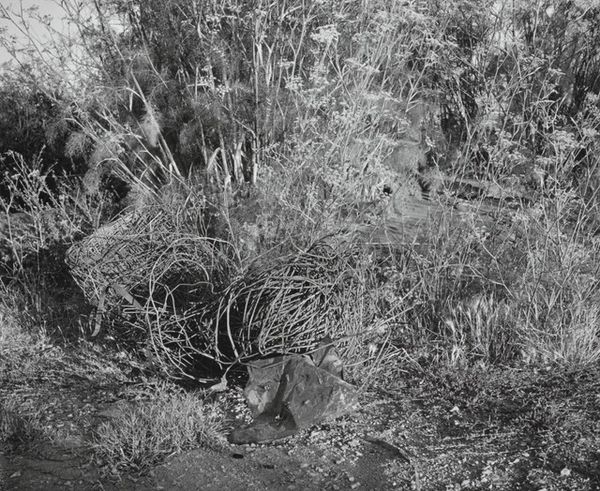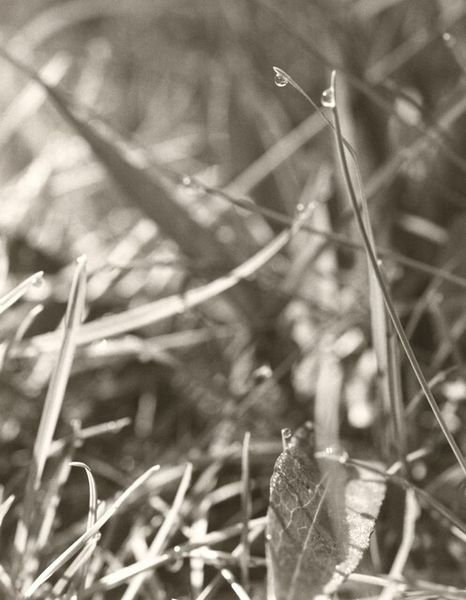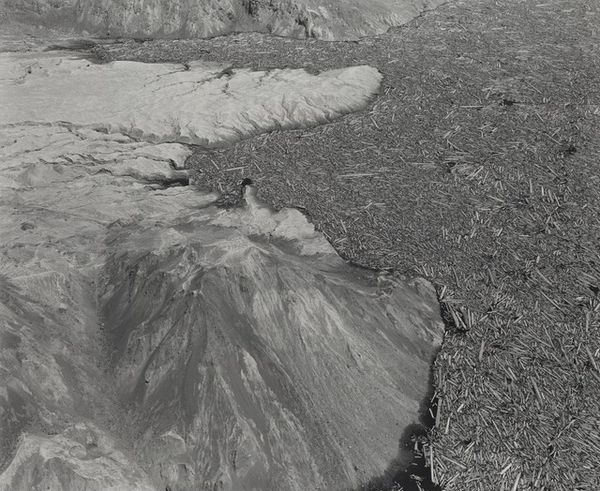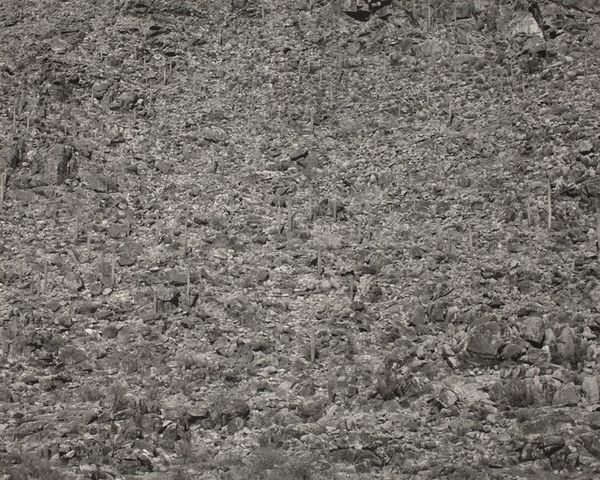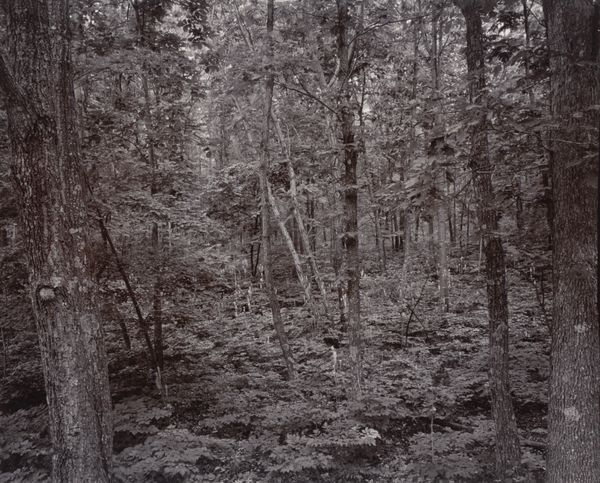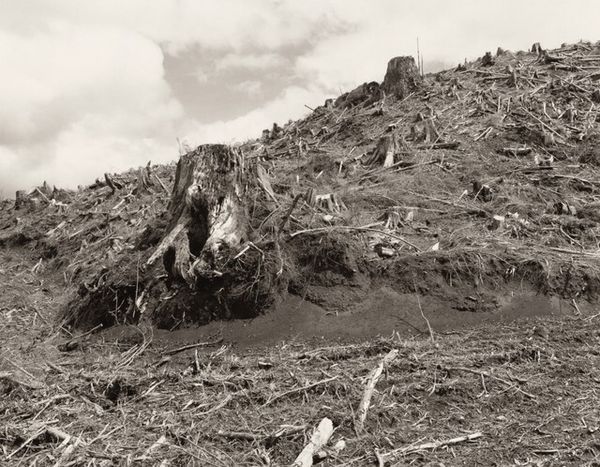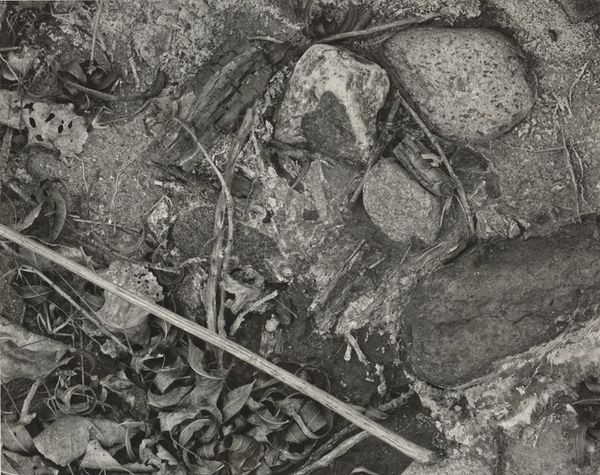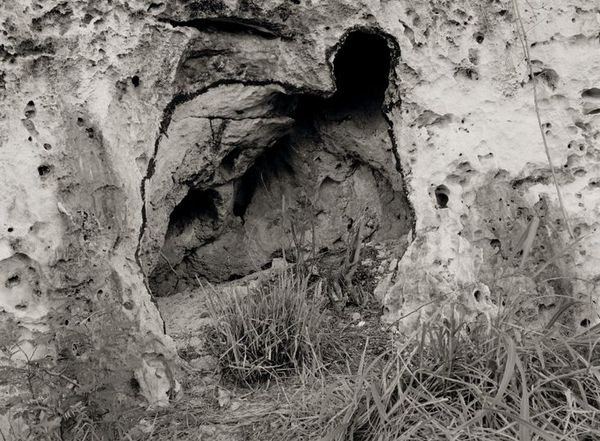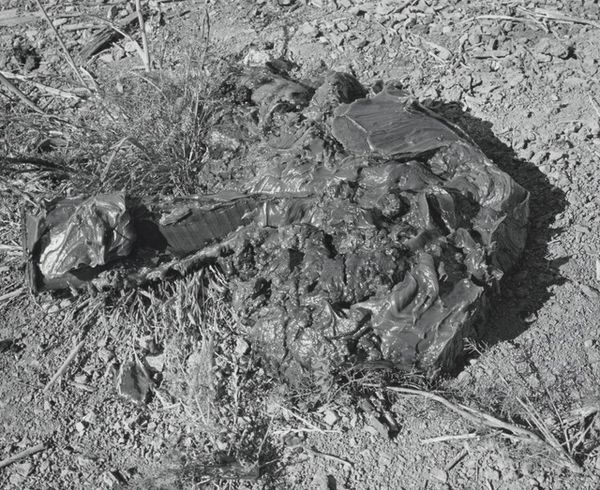
Kerstin, old-growth stump, the last evidence of the original forest, Clatsop County, Oregon c. 2001
0:00
0:00
Dimensions: image: 22.8 × 28.7 cm (9 × 11 5/16 in.) sheet: 27.9 × 35.4 cm (11 × 13 15/16 in.)
Copyright: National Gallery of Art: CC0 1.0
Curator: Robert Adams’ gelatin silver print, titled “Kerstin, old-growth stump, the last evidence of the original forest, Clatsop County, Oregon” and created circa 2001, certainly makes a statement. My immediate impression is of a desolate landscape, a raw wound on the earth. Editor: Desolate is exactly the right word. The monochrome intensifies that sense of loss. This photograph reads to me as a stark commentary on environmental degradation and perhaps even the spiritual cost of industrialization. Look at the solitary figure, Kerstin, seated by that massive stump. Curator: Indeed. It's important to remember the context of Adams’ work. He often documented the American West, focusing on the impact of development on the natural environment. His photographs aren’t merely landscapes; they are critiques of how we interact with, and often exploit, the land. The Clatsop County region, with its history of logging, makes the picture all the more potent. Editor: Absolutely. The politics of imagery here are unavoidable. The lone figure dwarfs that of the massive old-growth stump which itself stands among piles of felled timber and slash; Adams uses scale masterfully to emphasize vulnerability. There is that relationship between humans and the environment where the first one ends up impacting it by consuming its goods without measure, and the land as a witness becomes a symbol of endurance and loss. Do you see any symbolism here that makes that relationship even clearer? Curator: It definitely is a symbolic moment, a dialogue with destruction if you want, so yes, Kerstin herself takes on symbolic weight, doesn’t she? Her quiet presence suggests reflection and grief. The act of bearing witness is important. And by including her, Adams transforms what could have been a purely documentary photograph into something much more emotionally resonant. It compels us to think about our individual and collective responsibility towards the environment. Editor: Ultimately, this piece highlights a powerful connection between art, environmental awareness, and political accountability. The monochrome tones offer a visual bridge, emphasizing the contrast between past abundance and present scarcity. Curator: I agree; I leave here pondering not just the environmental devastation depicted, but also the human capacity for both destruction and, hopefully, eventual healing.
Comments
No comments
Be the first to comment and join the conversation on the ultimate creative platform.
